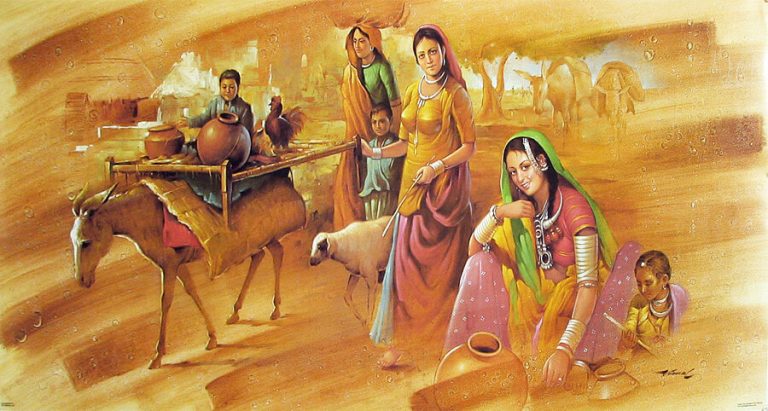
Banjara history which traces back to ancient times to pre-Indus river civilization was buried and not known to the world as there were no written documents.
By Babu Chinna Jamia Nayaka
Origin and Background
The Indus river civilization was the world’s oldest one and many nomadic tribes have once lived here. The Banjara tribe comes under the family of Indo-Aryan race speaking a language similar to that of Sanskrit and Hindi. The origin and background of Banjara was not well known not preserved due to their nomadic nature and illiteracy. There are differences of opinions among the historians of their original birth place, their settlements within and outside India. Syed Siraj Ul Hasan gives the account of the origin of Banjara, probably a story passed on:
The Banjara claim to be descended from Mota and Mola, the two brothers who tended Sri Krishna’s cows. From Mota sprang the ancestors of the modern Marwaris, Mathura Banjaras and Labhanas. Mola having no issue, once visited a prince’s court with his wife Radha, and there exhibited gymnastic feats, in which he was an adept. The Prince was so pleased with Mola’s skill and so charmed with Radha’s beauty and grace, that he gave them, as reward, three infant boys of different castes…. Their progeny have been collectively known as Charan Banjaras.
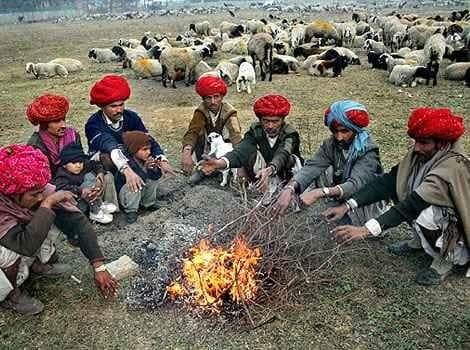
The Banjara tribe was divided into five clans viz., (1) Mathura, (2) Labhani, (3) Charan, (4) Dhadia; a fifth class Dhalias or Banjari Mongs were added to each clan as musicians, although their touch was considered as impure by other clans. Cumberlege points out that the Matura Banjara, who trace to Mathura in upper India are called Hindustani Brahmans who wore sacred thread and do not eat meat but learn Vedas like any other upper caste.
Among all others clans, the Charan Banjara formed a majority in south (Nizam territory and Bombay provinces) and they were divided into five exogamous clans – (1) Rathod, (2) Panwar, (3) Chavan, (4) Vaditya, and (5) Tori. From head of the each clan the lineage flows down. Rathod had seven sons, Panwar had twelve sons, Chauvan had six sons, Vaditya had thirteen sons, and Tori (Tamburis) had six sons. The Charans and their descendents were most notorious for highway robbery and dacoiti and also had involved in agriculture and cattle breeding. The Banjara who were uprooted from their trade by British government were forced to such crimes which invited the wrath of British. Tanaji Rathod mentions that “to curb the criminal activities, the Criminal Tribes Act of 1871 was promulgated under which Banjara community was notified as criminal tribes under the act.”
In Deccan, of the five original Charan Banjara clans, Rathods and Vaditiyas are chiefly found, especially in Nizm’s Dominions, Marathwada districts and Karnataka. In AD 1630 Asaf Jah, who campaigned against Bijapur, brought these Banjaras to south under the leadership of Bhangi and Jangi to supply food grains to his army. British army used them for supply of food and be the guide in the forests on their war against south India.
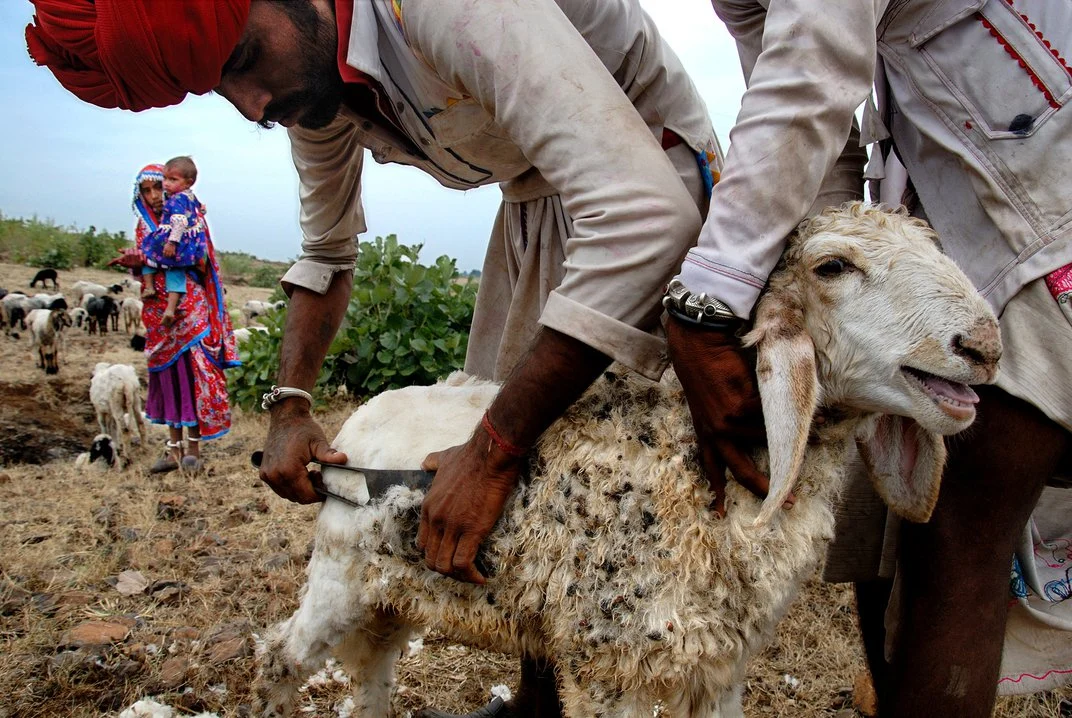 Etymology of the Word Banjara
Etymology of the Word Banjara
Syed Siraj mentioned that the name “Banjara” is derived from the Persian word “Berinji Arind” meaning ‘dealer in rice’; and also the Sanskrit words “Banij,” “Baniya” and “Banajiga” all refered to ‘a merchant’; they are also called by other names, such as “Lamani” which means in Sanskrit Lavana-salt; Labhans are the salt carriers, hence they were known as Lambada, Lambadi, Lambani or Banjara. K.S.Singh mentioned that ‘the Lambadis are also called Banjara, Brinjari or Banjari, Boipari, Sugali’ and they are well known tribe of carriers of salt and food grains on the packed bullock caravans.
The Banjara men and women are addressed as Ghor Mati and Ghor Dasi respectively, and they address to non-Banjara as Khor Mati. The names ‘Go-r’ was given for they were tending and rearing oxen/cows and were known as “Gor Banjara.” In Karnataka Banjara are well known as Lambani/Lambadi.
They are also known as ‘Gypsy” for these migrants came from the East, may be from Turkey, Nubia or Egypt or any other eastern places, hence were called “Egyptians” or “Gyptians” from this came the name “Gypsy.” There was yet another etymology originated in Persia that when the locals asked the migrants from where they have come from? They replied “Punjab-say — from Punjab, later heard as Jab say, Gypsy. The locals took Gypsy to mean from Egypt, a known country to them. All analysis by historians, anthropologists and social scientist link the Roma Gypsies with Indian origin.
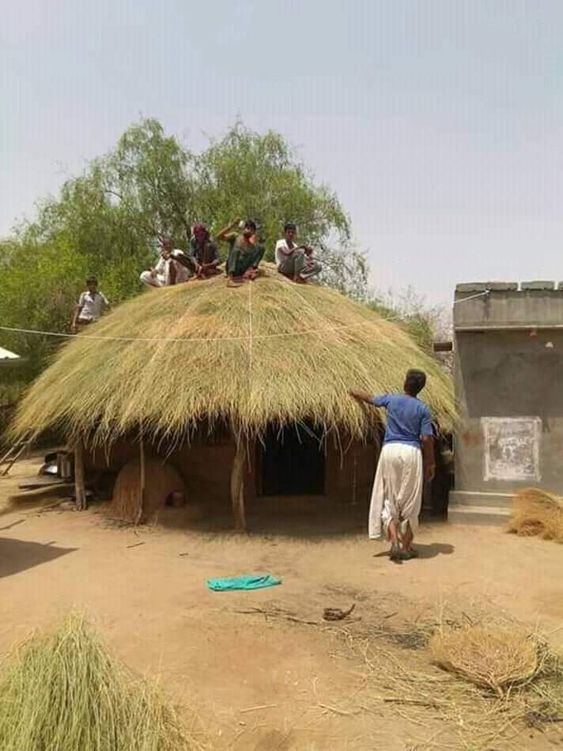
Historical Development
Motiraj Rathod in his book “Ancient History of Gor Banjara” writes that Gor (Banjara) were one of the ancient community, dating back to 5-6 thousand years BCE and there are references about Banjara in Greek Civilization leading up to Harappa and Mahenjodaro civilization and it is probable that Gor must have been the possible originators of Indus valley civilization to which documents are available. Tanaji G. Rathod opines that Banjara had engaged in trade since the pre-Indus times, but by the invasion of new races such as the Aryans, the Persians, the Kushans and the Huns, their history might have been buried during Indus valley period and there are numerous references and proofs found in Vedic period about Banjara settlements in and around Indus Valley. According to Sir H. Elliot, the original Banjara is said to have its origin in the sub-mountain tract from Ghorakpur to Haridwar, the North West provinces that use to come annually to the Eastern states with letters to buy grains for sale. He further asserts that in Dasakumaracharita there is a mention about Banjara but this view was dismissed by Conwell saying that the name did not occur in the original text of Dasacharita. Iyer mentioned that the majority scholars agree to assign the origin of Banjara to North India, probably Marwar as their original home and they claim to be Kshatriyas and to be descended from Rajput ancestors. Abbe Dubois says that Lambadis (Banjara) have more similarity with Maharattas than any other nation and from this these might have descended.
According to Crooke’s Berar Census Report (1881), the first census to hold in India, says that Banjaras are supposed to be the people mentioned by Arian in the fourth century BCE. Leading a wandering life, dwelling in tents and letting out their beast for hire to carry burdens; but nothing was mentioned about the name Banjara and for the first time the mention of Banjara was found in Muhammadan history when Sikhdhar attacked on Dholpur in AD 1504. General Briggs writes in 1813 about Banjaras that the first mention of Banjaras of Deccan on historical record is to be found in the work written by Mohamed Kasim Ferista’s “A History of the Rise and Progress of the Mohamedan Faith in the Country of Hind”, at Bijapur court in about AD 1417, when Khan Khanan, brother of Feroje Shah Bhamni seized the packed bullock of Banjaras, the grain merchants. Tanaji G Rathod, on the basis of their most primitive life in the State of Andhra Pradesh was initially thought to be Dravidian origin, but originally they all trace to Rajput tribe of North India, and Pundit Gourishankar concludes that Banjara claim to be Kshatriyas. Historically Banjara were the only tribe in India who carried out the business on packed bullocks which no other people practiced.
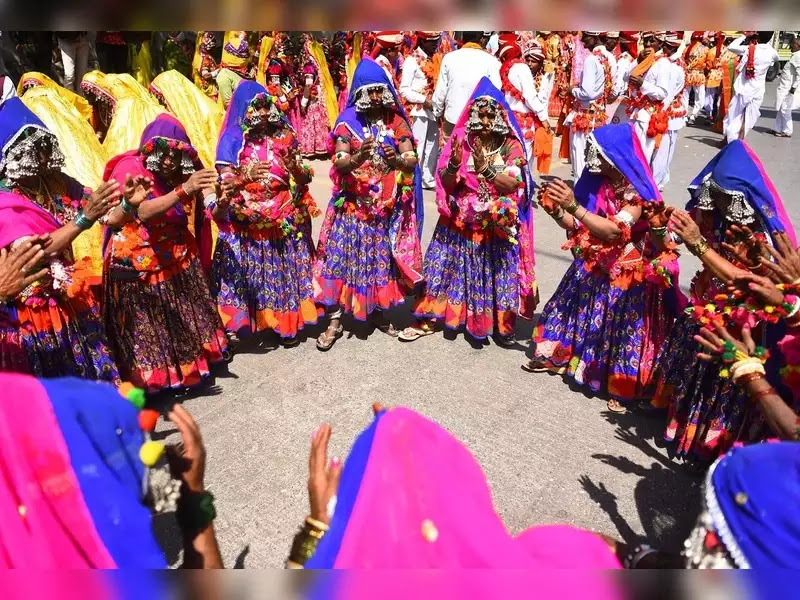 Geographical Spread of Banjara
Geographical Spread of Banjara
The North India or the Indus valley experienced a sequel of invasions by the various rulers. The Aryans, priestly groups regarded the Aryan life more precious than non-Aryan lives. So they did not engage in battle against the enemies, instead troops were assembled from non-Aryans and made the honorary members of Kshatriyas, a warrior caste. From among non-Aryans some were Lohars and Gujjars, some were Thandas (Banjara), some Rajput and some Sidhis (Sindhis/Sinti). This composite army took along the Banjaras to fight, provide food and some as captives. Subsequent invasions and captivities by the invasions the Banjara have scattered around the world. Having their origin in Rajputana in Northwest or North India, in due course of time have migrated to Middle East, North Africa, Europe, Russia, and Spain and other parts of the world. After the process of colonization and end of wars Banjara forgot their home in North India and settled down where ever they went.
The early history and the spread of Banjara to various countries remained a speculative. It was believed that they left their home land, the northern India, beginning as early as in the 5th century AD. However the most migrations began in the 11th century during the Mughal invasions on North India or North West India. They were taken as captives, musicians, horse breeders, labor force and food suppliers. They crossed across Iran into Asia Minor and into Byzantine Europe in the 14th century through the Greece. After a halt of about 100 years in Greece in the early 16th century they had reached Russia, Scandinavia, the British Isles and Spain. Through Balkans the Banjara entered into Europe, mainly concentrated in Romania and Hungary.
The Roma Gypsy and Indian Banjara (Gypsy) have almost 90% of similarities with regard to the language, costumes, lifestyle, and food habits, settlements between Roma Gypsy and Indian Banjara (Gypsy). A team of Genetic scientist have studied the genomes of 13 different Romani groups in Europe and have confirmed their North-West Indian origin.
Within India there were large migrations within India and majority spread to southern States, viz., Andhra Pradesh, Karnataka and Maharashtra. According to “Bhatkya Vimukta va Tyanche Prashna” an independent agency, the total Banjara population of India stands above 6 Crore, scattered in various states of India.
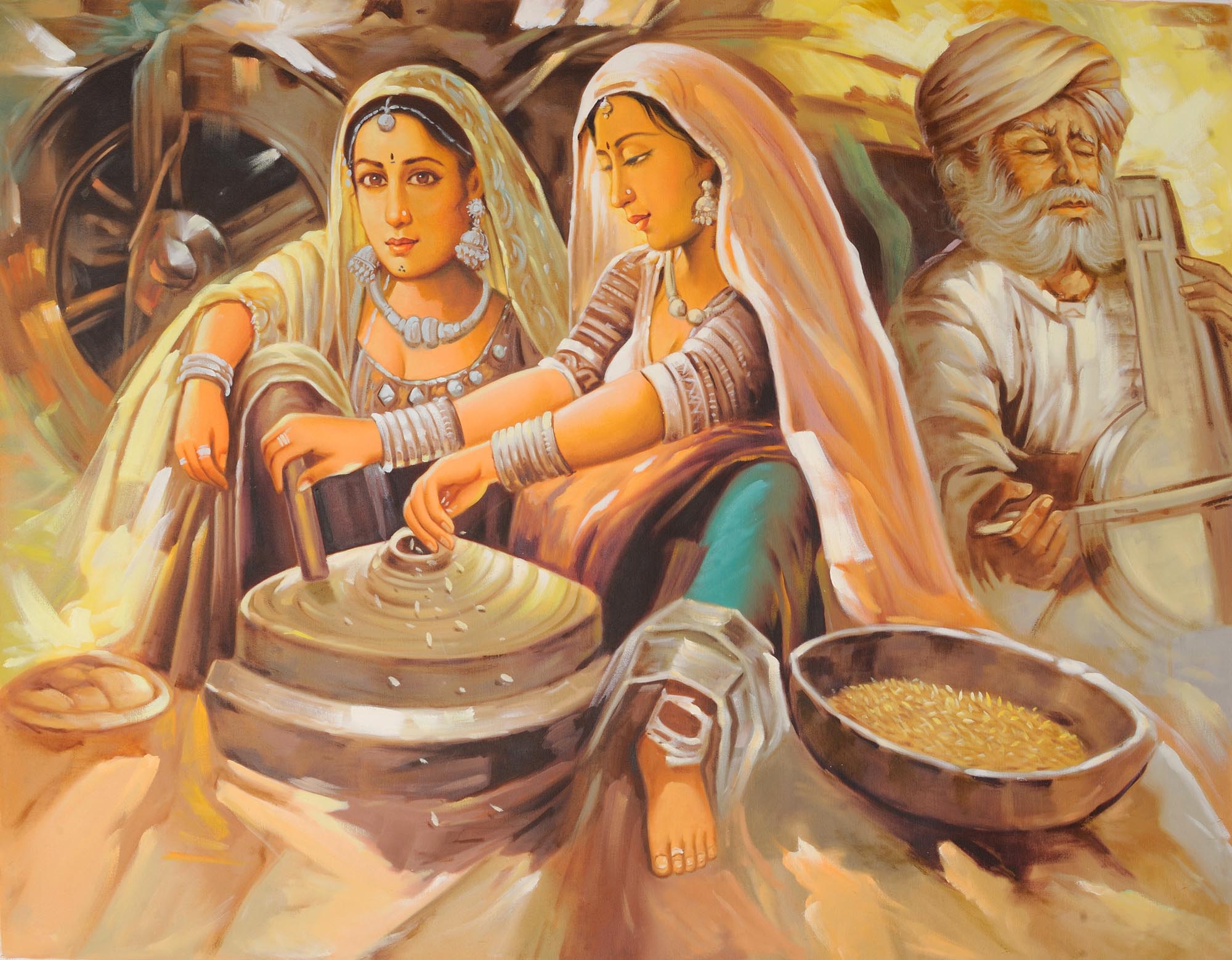 Social Life of Banjara Community
Social Life of Banjara Community
The unique community life, language, religious customs, festivals, and ceremonies marked the socio-cultural life of Banjaras. Predominantly Banjara maintained a unique and separate tribal identity. They claimed to have descended from Rajput ancestry from Rajasthan region. Though they have all tribal characteristics after classification of these DNTs they were included under various caste categories and in Karnataka they came under SC category. This uprooted their tribal identity and displaced them from their forest rights.
Banjaras, unlike any other people have a unique tradition of socio-cultural life, Thanda settlement, dress, language, festivals, gods, customs and manners as independent of public life. Dubois rightly pointed out that, “The Lambadis form a caste entirely distinct from the rest of Hindus being wholly different from them in religion, language, manners, and customs.” Mothiraj writes that Gorvamshiya (Banjara) had a unique culture, independent public life, unique tradition of livelihood, and much evident in their lifestyle, food habits, festivals, rituals, worship, likes and dislikes, dances, songs, languages, clothing and Thanda life. Nagarjuna Sagar in Nalgonda district of Andhra Pradesh is said to be the origin of Banjara dance and other cultural practices.
Banjara does not follow the caste system, rather have a clan system. However they follow Hinduism in their practice of religious and social life. During Deepavali and Holi Banjaras sacrifice goats to deities and go from house to house, dancing and receiving alms. The social and cultural life of Banjara distinguished them from other people.
Banjara Settlement/Thanda
The settlement of Banjara in camps outside the non-Banjara habitations was called Thanda/encampment. It was their exclusive characteristic to live in “Thanda” which they acquired from the days of their nomadic life. In the modern times though have settled still continued to live in Thandas. The traditional house of Banjara looked very different from other non-Banjara house which is naturally built and easily dissolvable. As they have been assimilated into the main stream society government is providing permanent houses. The social life settings of Banjara was still experienced and visible in present day. Some peculiarities of Banjara settlements are given here.
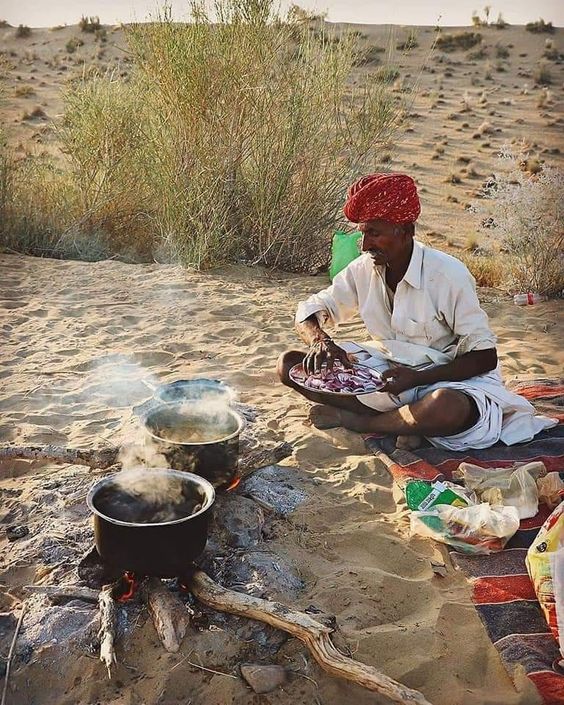
Community Life
Banjara people live in “Thanda” keeping a distance from non-Banjara people. The community was held above the individual interests and “Naik”(head of the community) led the community both in matters of socio-political and religious life. The kinship and clan or sub-clan relationship enhanced the strong sense of communitarian life.
Banjara and Non-Banjar
The Banjara settlement was a sign that they did not mixed with others. Banjara lived outside the villages in camps keeping the distance from other non-Banjara people. This helped them to preserve their unique socio-cultural life, language, dress, the songs and religious life. However the introduction of modernism and rise of poverty among Banjaras forced them to mingle with others.
Thanda Jury Board-Nasab
The political organization of Banjara tribe was headed by the Naik/chief for the disciplinary and juridical matters of the community. Naik is the head of the both spiritual and secular matters of the Thanda and governs his people standing in front. Each Nangar or Thanda was under a headman or Naik and this post could be mostly hereditary but sometimes people chose able person. The Thanda council is called Nasab or Thanda judiciary, dealt with matters related to adultery, rape, elopement, and family settlement. It also has got the power to impose fine and punishment to the offenders.
Thanda Jury Board is headed by Naik, and Karbhari who gives valuable suggestion to Naik for wellbeing of the Thanda. Normally there was no practice of going out to register cases in Police station or trial in courts; all cases are dealt within the Thanda judiciary which saves time, money, and reputation.
Banjara tribe was divided into four clans, namely, Rathod, Pamhar, Chauhan and Vaditya with a number of sub-clans within them. Each of this clan was exogamous and cannot marry within the same sub clan as they are considered as brother and sister. A man can marry his sister’s daughter, mother’s brother daughter. Banjara man cannot marry maternal uncle’s or anti’s daughter, such is considered as incest. In Banjara tribe usually as soon as the girl reaches puberty she was given in marriage. For girls the age will be 14-16 years and for boys the marriage age was 17-20 years. A non-Banjara girl will be taken in marriage but a Banjara girl will not be given to a non-Banjara boy. Normally the marriage continued for three to seven days, but due to increasing expenses it was reduced to three days. Apart from marriages held with general consensus other types of marriages were also present. (Continues)
_________________
Courtesy: Sinti Roma (Germany)